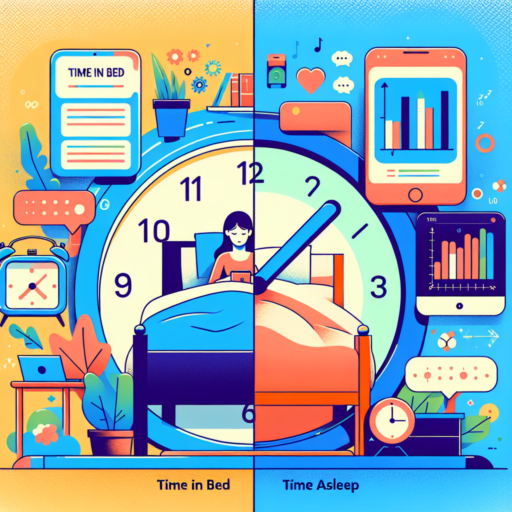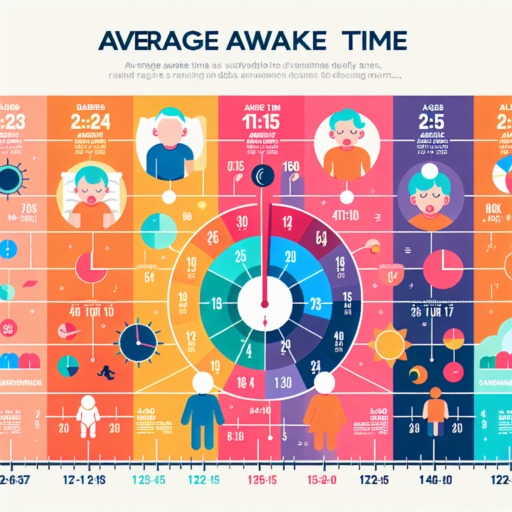What is the difference between time in bed and time asleep?
Understanding the distinction between time in bed and time asleep is crucial for anyone looking to improve their sleep quality and overall health. At a glance, the two concepts might seem synonymous, but they represent different aspects of your sleep cycle that can significantly impact your well-being.
Time in bed refers to the total duration spent lying in bed, including the time it takes to fall asleep, moments of wakefulness during the night, and the time spent in bed after waking up before getting up. It is essentially the span from deciding to «go to sleep» to the moment of finally getting out of bed in the morning. This metric is important as it encapsulates not just the sleep itself but also the quality of your sleep environment and your body’s readiness to sleep.
On the other hand, time asleep focuses solely on the period during which you are actually asleep. This excludes all the tossing, turning, and any awakenings throughout the night. Measuring time asleep gives you a more accurate insight into the restorative part of your sleep, highlighting the actual time your body spends in various sleep stages, including light, deep, and REM sleep. This measurement is pivotal for understanding and improving sleep quality, as it directly relates to the physical and mental benefits of sleep.
What does time in bed mean on an Apple Watch?
The time in bed feature on an Apple Watch is an integral part of the watch’s health tracking capabilities. It essentially measures the total time you spend in bed, not just the amount of time you are asleep. This distinction is crucial because it helps to provide a more comprehensive understanding of your sleep patterns and habits. By tracking the time you spend in bed, the Apple Watch aims to offer insights into your overall sleep quality, including the time taken to fall asleep and the periods of wakefulness throughout the night.
To accurately measure time in bed, the Apple Watch uses a combination of movement data and heart rate monitoring. When you’re lying still in bed, the watch detects minimal movement and a steady heart rate, which it interprets as rest time. However, it’s important to note that this time might include periods where you are awake but not actively moving, such as reading or attempting to fall asleep. Therefore, the time in bed metric might be longer than the actual sleep time recorded by the watch.
Understanding the nuances of the time in bed feature can help users improve their sleep hygiene. By comparing the time spent in bed with the actual sleep time, individuals can assess how long it takes them to fall asleep and how frequently they wake up at night. This information is valuable for identifying potential sleep issues and making necessary adjustments to bedtime routines. The Apple Watch presents this data in an easily understandable format, empowering users to make informed decisions about their sleep habits and ultimately enhance their sleep quality.
No se han encontrado productos.
Does time in bed count as sleep reddit?
Many people ponder over the question: Does time in bed count as sleep? Especially in discussions across various Reddit forums, this topic has gained considerable attention. Understanding the difference between the two can significantly impact how we perceive sleep quality and quantity. It is essential to note that just being in bed does not equate to actual sleep, as there are distinct stages of sleep that the body must cycle through to achieve restorative rest.
On Reddit, users often share their personal experiences and insights, discussing how lying in bed awake may not contribute to the restorative benefits of sleep, such as REM and deep sleep stages. These conversations highlight the importance of distinguishing between simply being in bed and actually sleeping. Moreover, the context often shifts towards improving sleep hygiene practices to reduce the time spent in bed without sleeping. Techniques such as keeping a regular sleep schedule and limiting screen time before bed are frequently suggested by users to enhance sleep efficiency.
Engaging in discussions on Reddit also brings to light the concept of ‘sleep latency’, which refers to the duration it takes for a person to transition from full wakefulness to sleep. This period, though technically spent in bed, is part of the falling asleep process and varies among individuals. Thus, while time in bed could include periods of restfulness, it might not all contribute to the sleep cycle critically needed for health and well-being.
How is time in bed calculated?
Calculating time in bed might seem straightforward, but it involves a bit more than just noting when you lie down and when you get up. This process can vary depending on the tools used for measurement—whether it’s manual tracking or using a sleep tracker. The concept revolves around understanding both the duration you spend in bed and distinguishing between restful sleep and periods of wakefulness while in bed.
Manual Calculation vs. Sleep Trackers
For those using manual calculation, it involves recording the time you get into bed intending to sleep and the time you wake up and leave the bed. However, this method doesn’t account for the periods of wakefulness or the time it takes you to fall asleep. On the other hand, sleep trackers, whether wearable devices or bed-based sensors, use motion detection and other technologies to provide a detailed analysis. These devices can differentiate between lying still and actual sleep, offering a more accurate account of your time in bed.
Understanding Sleep Efficiency
A key factor when calculating time in bed is the concept of sleep efficiency. This metric is calculated by dividing the total time spent asleep by the total time spent in bed, then multiplying by 100 to get a percentage. A higher percentage indicates more efficient sleep, where the time in bed closely matches the time spent asleep. This calculation helps individuals understand the quality of their bed time, not just the quantity.




